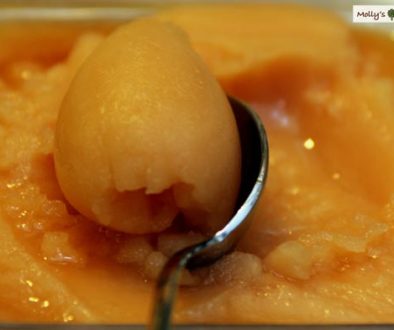Kitchen Fundamentals 101: Homemade Stocks: Beef, Chicken and Fish
 Learning to make the trinity of stocks is one of the most essential skills you can add to your repertoire of cooking techniques. If there is a “secret” to really good cooking it is the fact that there are no shortcuts. It is a labor of love, and every layer of a recipe, regardless of how simple, counts. You can almost always distinguish something that is “made from scratch” because there are layers that create a depth of flavor. Homemade stocks are one of the building blocks of flavor that truly do make a big difference. Technically they are very easy to master, with only a few key guidelines to remember:
Learning to make the trinity of stocks is one of the most essential skills you can add to your repertoire of cooking techniques. If there is a “secret” to really good cooking it is the fact that there are no shortcuts. It is a labor of love, and every layer of a recipe, regardless of how simple, counts. You can almost always distinguish something that is “made from scratch” because there are layers that create a depth of flavor. Homemade stocks are one of the building blocks of flavor that truly do make a big difference. Technically they are very easy to master, with only a few key guidelines to remember:
● Filling your stock pot with water just to cover the ingredients is crucial in maximizing the flavor in your broth. During the simmering process you want the liquid to become fully concentrated by the aromatics, vegetables and meat in the pot. If you overfill your pot with water the end result will taste watery and weak in flavor.
● Do not add salt to your stock. Over the course of cooking for many hours, the liquid reduces and concentrates. By keeping the recipe salt-free you not only prevent the stock from becoming overly salty, but also keep a neutral base from which you can add to other recipes that may require further reduction.
● Bring the stock to an initial boil, then immediately reduce the temperature to just barely simmering. If you aggressively boil a stock over a period of time you run the risk of reducing the liquid too quickly as well as causing it to turn cloudy. Excessive boiling causes the fat in animal bones to emulsify into the stock liquid, creating a murky appearance and flavor. Ideally, a stock should be quite clear in color with any animal fat at the surface where it can be easily ladled off.
● Allow your finished stock to cool at room temperature before refrigerating. Immediately refrigerating a hot container of stock will change the internal temperature of your fridge, encouraging the spoilage of perishable items.
● Before using your refrigerated stock, gently skim any layers of fat that have formed off the top surface before using. It is much easier to do this while the stock is cold and the fat has solidified. If you make the mistake of heating up the stock without skimming it first, the fat will cook back into it, creating a greasy liquid with a muddled flavor.
● Making stock in bulk is not only efficient, but assuming you have freezer space, gives you the option to freezer containers for later use. Refrigerated stock will only keep for up to a week so it is wise to only store what you intend to use immediately and freeze the rest.
Chicken Stock
Ingredients:
2, 10lb chickens, whole, with inside bag of organs removed
2 large onions, peeled and quartered
6 large carrots, peeled
6 celery stalks, cleaned
5 sprigs of fresh thyme
2 bay leaves
1 Tbsp black peppercorns
Method:
Place all of the ingredients in a large stock pot and fill with water just to cover. Bring pot to a boil then immediately reduce to a simmer. Continue to cook this way, with pot just barely simmering, for at least five hours. Remove pot from heat and strain stock through a sieve. Allow to cool before covering and storing in the fridge.
Beef Stock
Ingredients:
10 lbs. beef marrow bones *
¼ C. olive or canola oil
2 large onions, peeled and quartered
6 large carrots, peeled
6 celery stalks, cleaned
5 sprigs of fresh thyme
2 bay leaves
1 Tbsp black peppercorns
Method:
Heat a stock pot over medium-high heat for four minutes. Pour in oil then drop in marrow bones. Roast bones in oil, turning periodically, until they are a deep golden brown. Remove bones from the pot and set aside. Add vegetables to the pot to caramelize in the bone drippings and turn periodically until they are golden brown on all sides. Add bones back to the pot along with the remaining ingredients then add water just to cover. Bring pot a boil then immediately reduce heat so that the liquid just barely simmers. Cook this way for at least five hours then strain liquid through a sieve. Allow to cool before covering and storing in the fridge.
Fish Stock
Ingredients:
5 whole fish skeletons, heads in tact with gills removed *
2 large onions, peeled and quartered
6 celery stalks
6 large carrots, peeled
½ C. dry white wine
5 sprigs fresh thyme
2 bay leaves
Method:
Combine all ingredients in a stock pot then fill with cold water just to cover. Bring pot a boil then immediately reduce heat so that the liquid just barely simmers. Cook this way for at least five hours then strain liquid through a sieve. Allow to cool before covering and storing in the fridge.
* gills are located on both sides of the head, just back from the eyes and can be snipped out with a pair of scissors




November 19, 2009 @ 10:26 pm
Great post, Molly! I’ve got a mushroom stock for you here too. http://nourishnetwork.com/2009/10/19/mushroom-stock/
November 21, 2009 @ 8:15 am
Thanks, Lisa. A good mushroom stock is essential when I make mushroom risotto. I will check your recipe out.
November 20, 2009 @ 9:18 pm
I feel like (well, actually AM) a true student of this post. Thank you, Molly, for teaching me to make all of these stocks (and lobster stock!). Now, if I can only get around to making chicken stock before Thanksgiving. . . .
November 21, 2009 @ 8:13 am
Thanks Tiffany! Needless to say, you have tested the stock recipe more times than I can count. Even if there’s no time to make chicken stock before Tgiving, there is always the option of making turkey stock from the leftover carcass afterwards. Either way, your menu sounds wonderful as is.